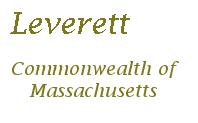The Nation, January 8, 2014
When Superstorm Sandy churned up fourteen-foot walls of water that slammed New York’s coastal communities in October 2012, they also washed away any false notions we had that we care sufficiently for poor people.
One year later, Bill de Blasio was the candidate to beat to lead the city. He pulled to the head of a clutch of Democratic candidates in August 2013 thanks to a populist platform that acknowledged the need for economic and racial equity. Asserting that de Blasio would be the mayor of all New Yorkers, his son, Dante, delivered the technical knock-out in the primary race when he appeared in an ad with his big afro and his run-down of de Blasio positions: tax the rich to fund early childhood education and after-school programs, build affordable housing and stamp out the New York City Police Department’s stop-and-frisk humiliation of black and Latino New Yorkers. By the August 13 mayoral debate, just a few days after the ad, de Blasio had vaulted from his number-two position trailing Christine Quinn to a six-point lead. In a city that is about 67 percent people of color—25.5 percent black and 29 percent Latino—we shouldn’t be surprised.
Now Dante’s dad is the city’s 109th mayor, and the question is no longer what he will do if elected but how he will deliver in the face of rising sea levels and rising inequality, in a city that is still trying to rebuild after Sandy while facing ongoing budget constraints. A look at an innovative project in Red Hook, the low-lying, low-income Brooklyn neighborhood known for its Ikea and Fairway Supermarket, should give the newly minted mayor some hints for how he can support smart, community-inspired projects to make meaningful change.
…snip…
Like many low-income and minority communities, Red Hook has its assets along with its adversities. While it is in the flood zone, it also has a model project—high-speed Internet access. In 2011, a community based youth organization, the Red Hook Initiative (RHI), wanted to engage more of the neighborhoods’ youth who lived nearby. To do that, RHI needed high-speed Internet access
Red Hook is one of the New York neighborhoods identified by the Center for an Urban Future as having a “broadband gap” for businesses. One local resident, who founded a neighborhood Internet service provider business called Brooklyn Fiber, said that the neighborhood would lose Internet access for weeks at a time. RHI, with the help of the Open Technology Institute at the New America Foundation and a Parsons School of Design graduate student, created a prototype for a wireless mesh network.
OTI has a detailed case study full of the technical details on its website. But to summarize, it installed a fairly inexpensive wireless radio transmitter on RHI’s roof and a router inside the RHI building that residents could use to access a wireless network in and around the building. When using the Wi-Fi, residents went to a server-based webpage with a “Shout Box” that allowed them to share comments or information. Wireless mesh networks can be expanded to cover greater geographic areas by simply adding more wireless radio transmitters. In March 2012, RHI allies added another radio transmitter on an apartment building overlooking the neighborhood’s Coffey Park. A resident of the building donated the electricity to power the radio transmitter. Now two public spaces were connected in a wireless network and the message board expanded.
…snip…
Far too many Red Hook residents still don’t have access to affordable Internet. The local ISP provider charges less than cable, but it still costs an average of $75 a month. Carter is two blocks from RHI and his aunt is five blocks away. Neither can access the free service. Like many low-income communities of color, Red Hook has fewer people using high-speed Internet than the average New York neighborhood. According to the Federal Communications Commission report released just before Hurricane Sandy, 19 million Americans still lack access because the physical infrastructure to connect to broadband doesn’t exist where they live. Thanks to the corporate telecommunications giants’, like Verizon, holding a monopoly and using expensive infrastructure, like copper wiring, high-speed Internet is often too costly to make subscriptions affordable. In urban communities, 57 percent percent of blacks and 58 percent of Latinos respectively versus 77 percent of whites had at-home Internet subscriptions in 2011. Blacks and Latinos are also more likely than whites to report that lack of broadband was a major disadvantage in their accessing employment opportunities, getting information on health, connecting to government services, staying abreast of news, keeping up with developments in the local community and acquiring new knowledge.
Red Hook and other local initiatives are trying to change this. The Institute for Local Self-Reliance has found that more than 3 million Americans have access to high-speed Internet through publicly-owned networks, which have saved these communities millions of dollars and motivated incumbent providers to improve services because of increased competition. New York is getting a big infusion of federal dollars to rebuild after Hurricane Sandy. Mayor de Blasio should look for ways to leverage some of those dollars to better equip low-lying, low-income communities to weather the roiling seas of climate change and the economy.
High-speed Internet access won’t stop future superstorms and it won’t solve all the unfairness that low-income New Yorkers face. But with strong alliances between community members, local non-profits, businesses and technology experts, it will bring affordable, local innovation that helps us build stronger, fairer and more resilient communities.





